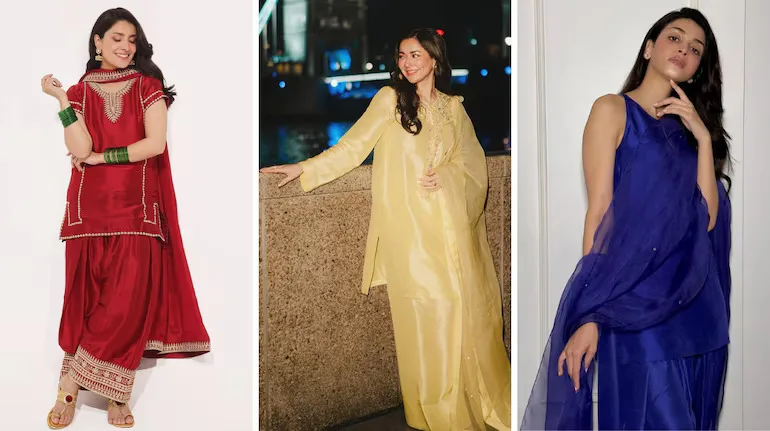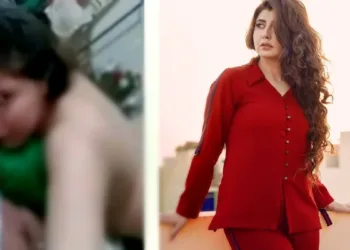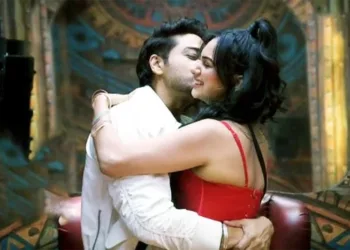As the crescent moon of Eid 2025 approaches, a sartorial revolution is sweeping through the fashion landscape, bringing with it the resurgence of a timeless classic – the Farshi shalwar. This regal garment, steeped in Mughal history and redolent of aristocratic grace, is making a triumphant return to the forefront of festive fashion. Leading the charge are some of the subcontinent’s most beloved celebrities, including the effervescent Hania Aamir, the elegant Ayeza Khan, and the stunning Anmol Baloch, each putting their unique spin on this traditional attire.
Table of Contents
The Farshi shalwar, with its floor-grazing length and voluminous silhouette, is more than just a fashion statement; it’s a nod to our rich cultural heritage, a bridge between the opulence of the past and the dynamism of the present. As designers reimagine this classic piece for the modern era, we’re witnessing a beautiful fusion of tradition and contemporary style that’s captivating fashion enthusiasts and cultural connoisseurs alike.
In this deep dive into the world of Farshi shalwars, we’ll explore their fascinating history, trace their journey from royal courts to silver screens, and uncover the secrets to styling these majestic garments for Eid 2025. Whether you’re a fashion aficionado looking to make a statement this festive season or simply curious about the evolving landscape of South Asian fashion, join us as we unravel the allure of the Farshi shalwar – a garment that’s not just worn, but experienced.
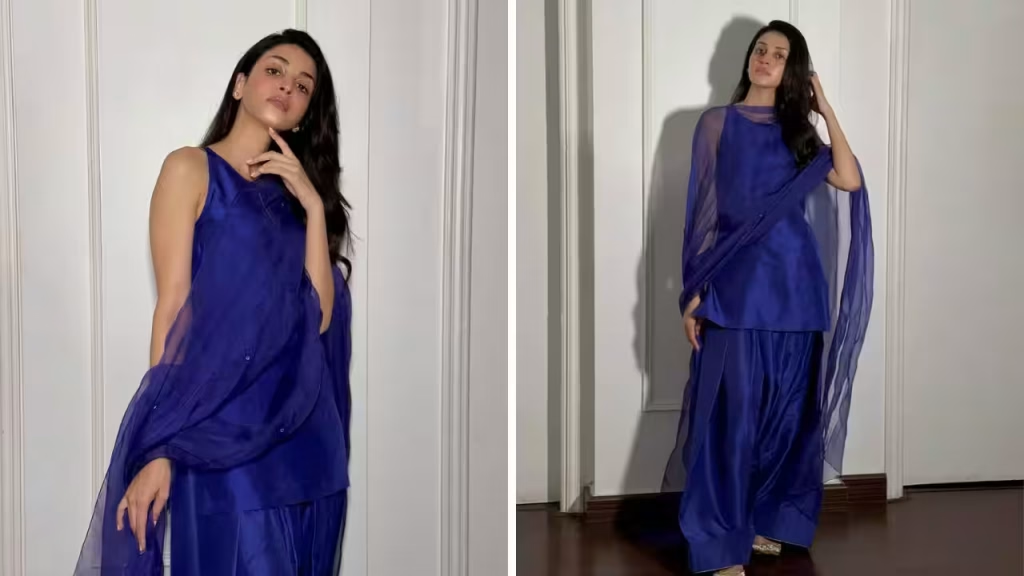
From Mughal Courts to Modern Runways: The Farshi Shalwar’s Regal Journey
The Farshi shalwar, a garment that once graced the halls of Mughal palaces, is experiencing a renaissance that’s set to define Eid fashion in 2025. This resurgence isn’t just a fleeting trend; it’s a celebration of cultural heritage, a testament to the enduring appeal of traditional craftsmanship, and a showcase of how classic styles can be reimagined for the modern era.
A Royal Legacy Reborn
The origins of the Farshi shalwar can be traced back to 18th century Uttar Pradesh, where it emerged as a symbol of status and refinement among aristocratic Muslim women. The term “Farshi” itself is derived from the Persian word “Farsh,” meaning floor, aptly describing the garment’s sweeping length. Interestingly, its design is believed to have been influenced by the gowns worn by British noblewomen of the era, showcasing the cultural exchange that has always been at the heart of fashion evolution.
In its heyday, the Farshi shalwar was more than just clothing; it was a statement of elegance and social standing. Paired with intricately embellished kameez and flowing dupattas, it created an ensemble fit for royalty. However, as fashion trends shifted towards more practical, shorter shalwars, the Farshi style gradually faded from everyday wear, finding refuge in wedding ensembles and classical dance performances.
The Modern Revival
Fast forward to 2025, and the Farshi shalwar is once again in the spotlight, thanks to a perfect storm of celebrity endorsements, designer innovations, and a growing appreciation for cultural heritage. Celebrities like Hania Aamir, Ayeza Khan, and Anmol Baloch have been instrumental in bringing this style back into the public eye, showcasing its versatility and elegance on social media and at high-profile events.
Designers are playing a crucial role in this revival, reimagining the Farshi shalwar for contemporary tastes while respecting its traditional essence. Names like Heena Kochhar and Sheetal Batra are at the forefront, experimenting with:
- Modern cuts that balance volume with wearability
- Innovative embellishments that add a contemporary flair
- A diverse range of fabrics, from luxurious silks to breathable linens
This renaissance isn’t limited to women’s fashion either. Men are increasingly embracing the Farshi style, pairing it with kurtas for a look that’s both traditional and fashion-forward.
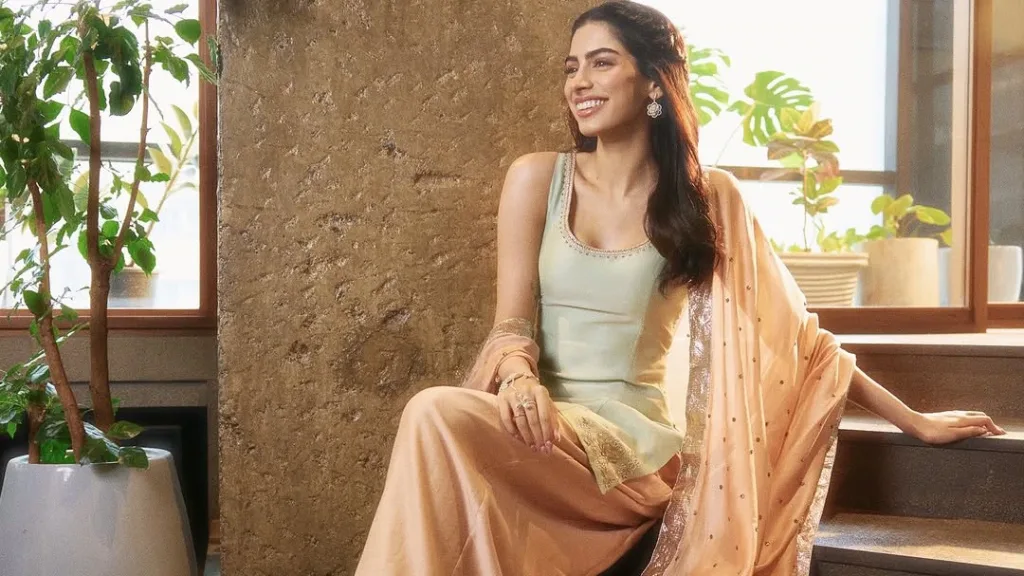
Styling the Farshi Shalwar for Eid 2025
For those looking to incorporate this regal style into their Eid 2025 wardrobe, here are some key styling tips:
- Length is Key: The hallmark of a Farshi shalwar is its floor-grazing length. Ensure the hemline falls below the ankles to maintain its flowing structure.
- Perfect Pairings: Complement your Farshi shalwar with a long, flowing kameez. The dupatta can be draped traditionally over both shoulders or worn loosely for a more relaxed look.
- Fabric Choices: Opt for fabrics that offer both structure and fluidity. Popular choices include:
- Banarasi silk for a luxurious feel
- Chiffon or georgette for a lighter, more ethereal look
- Cotton or linen for comfort in warmer climates
- Accessorize Wisely: Complete your ensemble with:
- A traditional potli bag or metallic clutch
- Juttis or khussas for an authentic touch
- Statement jewelry that complements, not overwhelms, the outfit
Here’s a quick reference guide for styling your Farshi shalwar:
| Element | Recommendation |
|---|---|
| Length | Below the ankles |
| Top | Long, flowing kameez |
| Fabric | Silk, chiffon, cotton, or linen |
| Accessories | Potli bag, juttis, statement jewelry |
| Color Palette | Rich, festive hues or pastel elegance |
The revival of the Farshi shalwar for Eid 2025 is more than just a fashion trend; it’s a celebration of cultural heritage and a testament to the cyclical nature of style. By embracing this traditional garment, wearers are not only making a fashion statement but also connecting with a rich historical legacy.
Conclusion
As Eid 2025 approaches, the Farshi shalwar stands as a symbol of the beautiful synergy between tradition and modernity in South Asian fashion. Its resurgence, championed by celebrities and reimagined by designers, offers a unique opportunity to connect with our cultural roots while making a bold, contemporary fashion statement.
The appeal of the Farshi shalwar lies not just in its aesthetic beauty, but in its ability to tell a story – a story of royal heritage, of cultural evolution, and of the timeless elegance that transcends generations. As we embrace this trend, we’re not just wearing a garment; we’re participating in a living tradition, one that continues to evolve and inspire.
Whether you choose to don a Farshi shalwar for Eid prayers, festive gatherings, or as a statement piece for special occasions, you’re carrying forward a legacy of elegance and cultural pride. In a world that often moves too fast, the Farshi shalwar invites us to slow down, to appreciate the artistry of traditional craftsmanship, and to move through the world with the grace and poise of royalty.
As we look forward to the joyous celebrations of Eid 2025, let the Farshi shalwar be more than just an outfit choice – let it be a celebration of identity, a nod to history, and a step towards a future where tradition and modernity walk hand in hand, much like the flowing silhouette of this timeless garment.
Frequently Asked Questions
Q1: Are Farshi shalwars suitable for all body types?
A: Yes, Farshi shalwars can be flattering for various body types. The key is in the tailoring and styling. For petite figures, opt for lighter fabrics and subtle pleats. Taller individuals can embrace bolder patterns and more voluminous styles. A well-fitted kameez can help balance the proportions for all body types.
Q2: How can I make my Farshi shalwar suitable for everyday wear?
A: While traditionally a formal garment, Farshi shalwars can be adapted for more casual settings. Choose lighter fabrics like cotton or linen, and pair with a simpler, less embellished kameez. Opt for subtle colors and minimal accessories for a more understated look suitable for daily wear or office settings.

